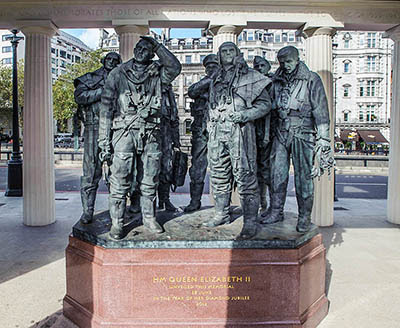February 6, 1945 - A Grand Slam
From the Operations Record Book:
The weather and visibility was very poor and no flying training possible. The Squadron was however ordered to stand by for operations in anticipation of a break in the weather conditions which did not materialise and the [unreadable] from operations until 23.59 hrs. No flying training [ground training] only being the order of the day. The Squadron was visited by the Roman Catholic Padre, Father Fitzgerald, who had a few kindly words to say [unreadable] personnel in the Squadron.
(For some unknown reason, sections of the entry for February 6th were blotted out)
(For some unknown reason, sections of the entry for February 6th were blotted out)
 |
| The 22,000 Grand Slam, Source: ConstructConnect.com |
The Lancaster could carry the largest bombs used by the RAF including the 4,000 lb ‘cookie’ and 8,000 lb and 12,000 lb ‘blockbuster’ bombers, so-nicknamed for their ability to raze an entire street or topple a large building when combined with the effects of smaller incendiaries. Though primarily used for night bombing, they were also used by day for precision bombing runs using 12,000 lb ‘tall boys’ and the 22,000 lb ‘grand slam,’ both classified as ‘earthquake bombs.’
‘Earthquake’ bombs were designed to embed itself deep underground before detonating, creating both massive craters and intense shockwaves, effective for large, challenging targets such as bridges, dams and rail tunnels.
At 27’ long, the ‘grand slam’ was the largest payload of any bomber in the war though it would not be used until March 13, 1945, six days after the Harris Crew’s final mission.
The Bomber Command Museum in Nanton, Alberta not only has a restored Lancaster you can walk through, but they have recently brought in a replica 'grand slam' to add to their collection. Read more about the museum's grand slam.

Comments
Post a Comment